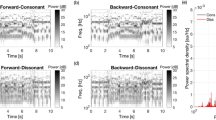Abstract
Music is a universal feature of human societies over time, mainly because it allows expression and regulation of strong emotions, thus influencing moods and evoking pleasure. The nucleus accumbens (NA), the most important pleasure center of the human brain (dominates the reward system), is the ‘king of neurosciences’ and dopamine (DA) can be rightfully considered as its ‘crown’ due to the fundamental role that this neurotransmitter plays in the brain’s reward system. Purpose of this article was to review the existing literature regarding the relation between music and the NA. Studies have shown that reward value for music can be coded by activity levels in the NA, whose functional connectivity with auditory and frontal areas increases as a function of increasing musical reward. Listening to music strongly modulates activity in a network of mesolimbic structures involved in reward processing including the NA. The functional connectivity between brain regions mediating reward, autonomic and cognitive processing provides insight into understanding why listening to music is one of the most rewarding and pleasurable human experiences. Musical stimuli can significantly increase extracellular DA levels in the NA. NA DA and serotonin were found significantly higher in animals exposed to music. Finally, passive listening to unfamiliar although liked music showed activations in the NA.

Similar content being viewed by others
References
Blum K, Chen TJ, Chen AL et al (2010) Do dopaminergic gene polymorphisms affect mesolimbic reward activation of music listening response? Therapeutic impact on Reward Deficiency Syndrome (RDS). Med Hypotheses 74(3):513–520
Brown S, Martinez MJ, Parsons LM (2004) Passive music listening spontaneously engages limbic and paralimbic systems. NeuroReport 15(13):2033–2037
Earp SE, Maney DL (2012) Birdsong: is it music to their ears? Front Evol Neurosci 4:14
Feduccia AA, Duvauchelle CL (2008) Auditory stimuli enhance MDMA-conditioned reward and MDMA-induced nucleus accumbens dopamine, serotonin and locomotor responses. Brain Res Bull 77(4):189–196
Hosseini SE, Bagheri M, Honarparvaran N (2013) Investigating the effect of music on labor pain and progress in the active stage of first labor. Eur Rev Med Pharmacol Sci 17(11):1479–1487
Jeffries KJ, Fritz JB, Braun AR (2003) Words in melody: an H(2)15O PET study of brain activation during singing and speaking. NeuroReport 14(5):749–754
Keller J, Young CB, Kelley E et al (2013) Trait anhedonia is associated with reduced reactivity and connectivity of mesolimbic and paralimbic reward pathways. J Psychiatr Res 47(10):1319–1328
Koelsch S (2014) Brain correlates of music-evoked emotions. Nat Rev Neurosci 15(3):170–180
Koelsch S, Skouras S, Jentschke S (2013) Neural correlates of emotional personality: a structural and functional magnetic resonance imaging study. PLoS ONE 8(11):e77196
Mantione M, Figee M, Denys D (2014) A case of musical preference for Johnny Cash following deep brain stimulation of the nucleus accumbens. Front Behav Neurosci 8:152
Mavridis IN (2013) Anatomizing the “King of Neurosciences”. World J Neurol 3(2):4–6
Mavridis IN (2012) Stereotactic neurosurgical anatomy of the nucleus accumbens. PhD Thesis, National and Kapodistrian University of Athens (School of Medicine), Athens. doi:10.12681/eadd/27603. Available via DIALOG. http://thesis.ekt.gr/thesisBookReader/id/27603#page/mode/2up. Accessed 5 May 2014
Menon V, Levitin DJ (2005) The rewards of music listening: response and physiological connectivity of the mesolimbic system. Neuroimage 28(1):175–184
Osuch EA, Bluhm RL, Williamson PC et al (2009) Brain activation to favorite music in healthy controls and depressed patients. NeuroReport 20(13):1204–1208
Polston JE, Rubbinaccio HY, Morra JT et al (2011) Music and methamphetamine: conditioned cue-induced increases in locomotor activity and dopamine release in rats. Pharmacol Biochem Behav 98(1):54–61
Salimpoor VN, Benovoy M, Larcher K et al (2011) Anatomically distinct dopamine release during anticipation and experience of peak emotion to music. Nat Neurosci 14(2):257–262
Salimpoor VN, van den Bosch I, Kovacevic N et al (2013) Interactions between the nucleus accumbens and auditory cortices predict music reward value. Science 340(6129):216–219
Tavakoli F, Hoseini SE, Mokhtari M et al (2012) Role of music in morphine rewarding effects in mice using conditioned place preference method. Neuro Endocrinol Lett 33(7):709–712
Zatorre RJ, Salimpoor VN (2013) From perception to pleasure: music and its neural substrates. Proc Natl Acad Sci USA 110(Suppl 2):10430–10437
Conflict of interest
The author declares that he has no conflict of interest.
Author information
Authors and Affiliations
Corresponding author
Rights and permissions
About this article
Cite this article
Mavridis, I.N. Music and the nucleus accumbens. Surg Radiol Anat 37, 121–125 (2015). https://doi.org/10.1007/s00276-014-1360-0
Received:
Accepted:
Published:
Issue Date:
DOI: https://doi.org/10.1007/s00276-014-1360-0




